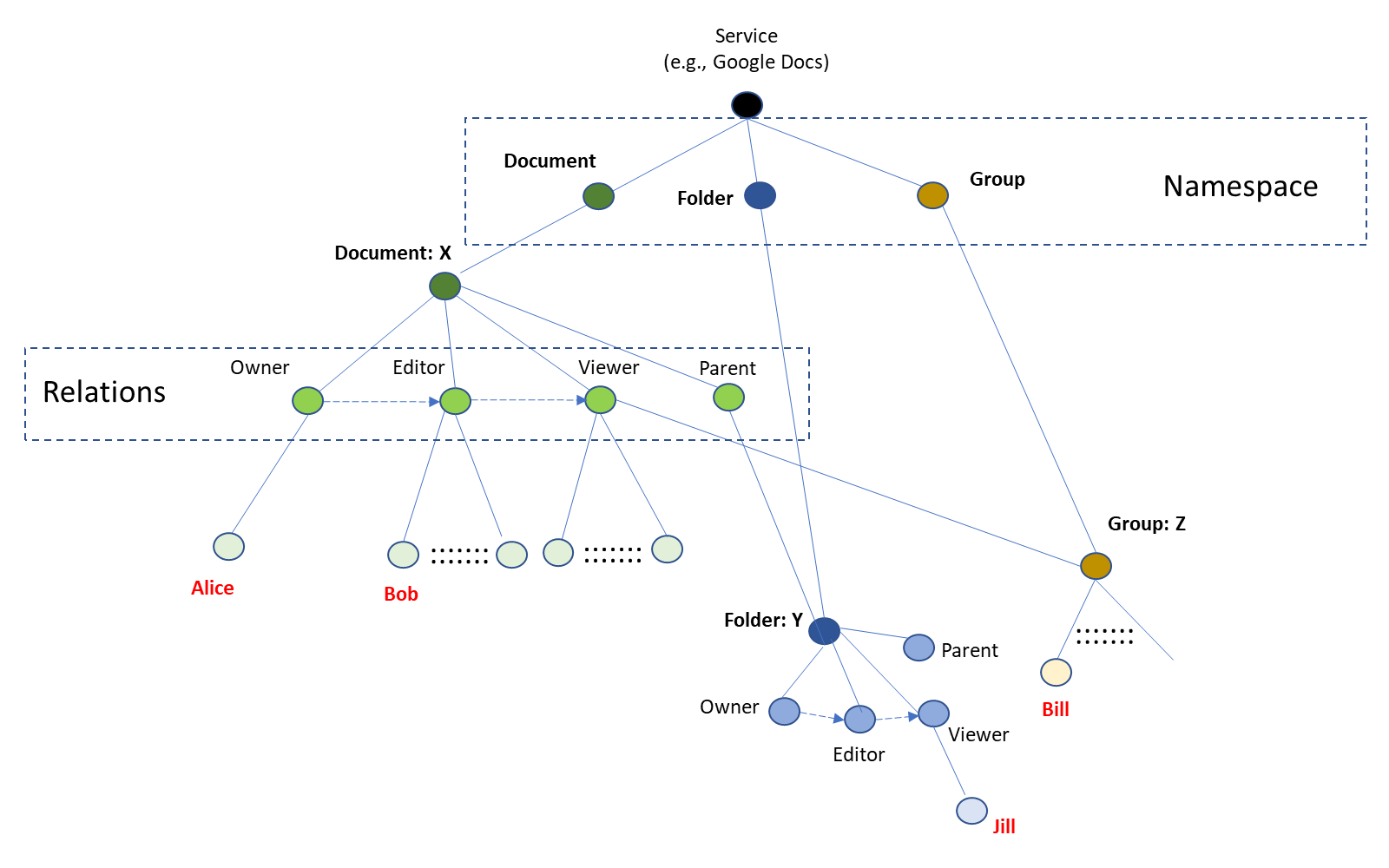Relationship-based Access Control (ReBAC)

Overview
ReBAC is an authorization model that assigns permissions based on relations between resources. Relations include data ownership, parent-child relationships, groups, and hierarchies. Google Zanzibar, the authorization system for Drive, YouTube, and other Google services, is most commonly associated with this authorization model.
ReBAC allows organizations to model their application’s resource hierarchy so that the authorization model matches it. Most B2B apps have tenants or organizations at the top of their resource hierarchy, followed other object types, such as teams, projects, lists, folders, and even individual items. ReBAC allows organizations to restrict access at any level of the hierarchy and apply the principle of least privilege using fine-grained access control.
To build relationship-based access control, developers need to describe a relationship graph between subjects (users/groups) and objects (teams, projects, lists, folders, individual items) in their system. Once done, the authorization policy will check whether a particular type of relationship exists for any user or resource and determine which permissions are granted based on that information.
Example
In the RBAC example, we looked at a wiki system. Now let's look at a hierarchical document storage system where permissions need to be fine-grained down to the level of files and folders. We can define different object types like user, folder, and document. Next we can define relations between documents and users, such as owner, editor, viewer, as well as a parent relation between documents and folders. Finally we can define permissions that are granted based on relations being present.
As an example, we can say that users that have the viewer, editor, or owner relation on a folder are granted the can_read permission; and editors and owners of the folder are granted the can_write permission. parent is a special relation that inherits the can_read and can_write permissions from the parent folder.
Here is a table showing the objects, relations, and granted permissions.
| Object | Relation | Relation Type | Permissions |
|---|---|---|---|
| User | |||
| Folder | owner | user | can_read, can_write |
| editor | user | can_read, can_write | |
| viewer | user | can_read | |
| parent | folder | parent->can_read, parent->can_write | |
| File | owner | user | can_read, can_write |
| editor | user | can_read, can_write | |
| viewer | user | can_read | |
| parent | folder | parent->can_read, parent->can_write |
Notice in the table the power of ReBAC. We're able to define permissions in a very fine-grained way, and we can have them flow down the hierarchy.
Pros and Cons
The table below indicates the pros and cons of using a ReBAC model:
| Pro | Con |
|---|---|
| Allows very fine-grained access control down to an individual resource | Requires managing the relationships |
| Very flexible | Can be difficult to scale due to storage requirements |
| Aligns with the organization hierarchy | Can run into consistency issues between the system of record and the authorization system |